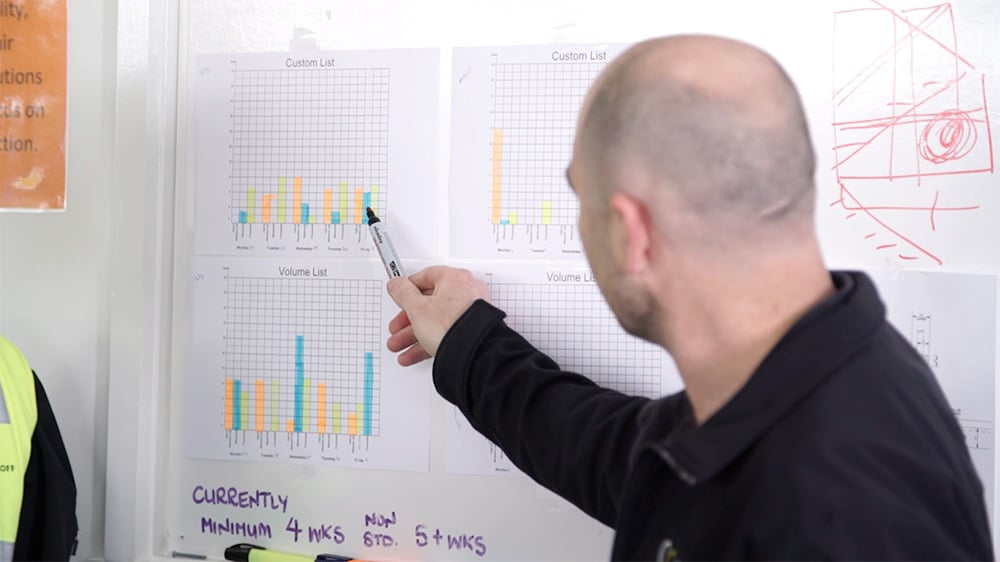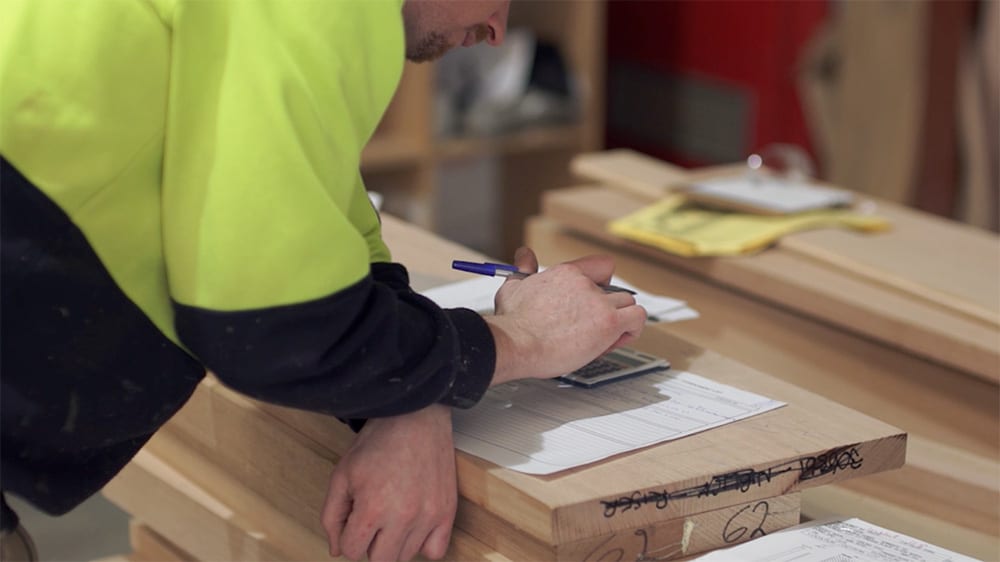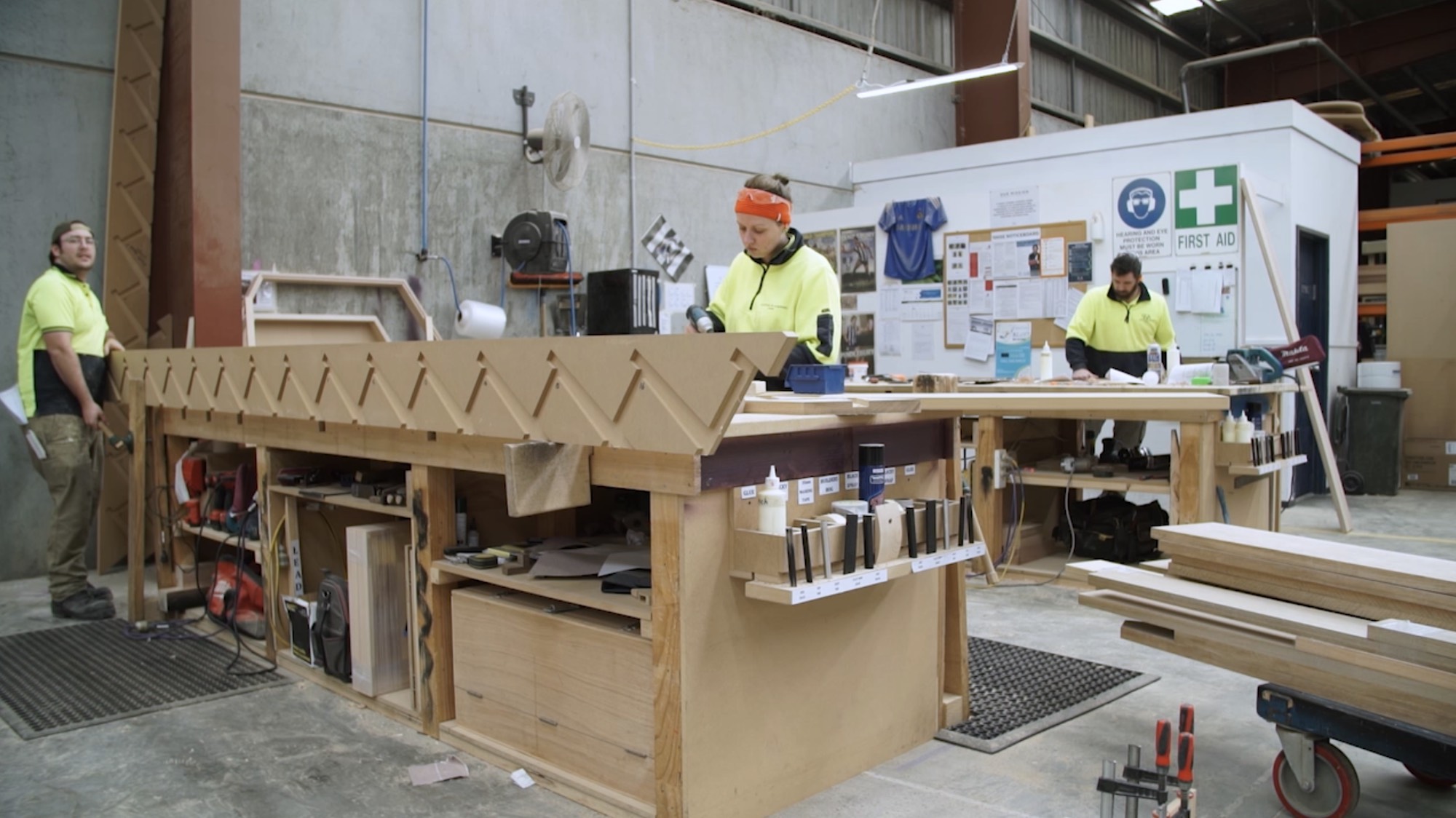Everyone knows that Lean Thinking originated in the automotive company. So, what does a system of manufacturing developed for making cars on assembly lines have to do with manufacturing doors, windows, cabinetry, staircases, furniture ,and other wood products.
The team at TXM has worked with around 50 joinery and woodworking companies around the world. From this experience we have identified five key tips to share that can help your company get the most out of your factory team and deliver quality products on time to customers.
Lead Time is The Key

There are lots of measures that you can apply to joinery, but improving one measure can perhaps have more impact than any other. That is, the lead time from receiving raw materials to shipping finished quality product to your customer. Lead time matters in so many ways.
Firstly, cash flow is a critical challenge for suppliers to the construction industry. Every uncompleted job on your floor is money you have invested for which you have not had a return. If you can turn jobs around faster, then you can also turn your cash around faster and have more money in the bank rather than sitting on the shop floor.
Secondly, Lead time is also space. Joinery and woodworking products are usually bulky. The longer your lead time, the more jobs you have in progress and the more space they take. Space costs money in terms of bigger buildings and more rent. Also more space also means more double handling of jobs, wasting labour and increasing the chance that a job will get damaged.
Thirdly, lead time means flexibility. Builders are notorious for changing delivery dates. The longer it takes you to make a job, the earlier you have to start it and the greater chance that the builder’s predicted delivery date will have slipped, and you will have to hold the finished job.
Start by measuring the lead time on each job and understand where jobs are held up and what key improvements need to be made to overcome those bottlenecks.
It’s What You Finish that Counts, Not What You Start
Like many manufacturing, processes, in woodworking the fastest processes are often the first processes completed. Cutting material to the required size and shape on a beam saw or CNC router is a fast process, whereas downstream processes such as assembly are often slow manual activities.
Many businesses focus on keeping their expensive key machines running continuously and often their key measure is the number of boards processed. However, in most cases the customer is buying finished products, not just boards and the CNC machines are rarely the bottleneck. Therefore, all pushing production through your CNC machines does is cause jobs to build up behind the real bottleneck, which is usually finishing and assembly. This build-up of jobs is then usually a key driver of lead time, which I mentioned above is your most important metric.
TXM Case Study: Specialist Door Solutions
Design is a Production Process
Whether you are making cabinetry, windows, doors, staircases or custom beams, most woodworking businesses make a product customised to customer needs. This means that jobs must be individually designed, drawn, and programmed prior to manufacture. Your designers (sometimes called technical detailers) may sit in an office and work behind a computer screen, but they are just as much a part of the production process as a joiner working on a carpentry bench.
We frequently find woodworking businesses where the design office is the major bottleneck. It is therefore surprising that most businesses don’t measure throughput, lead time or quality in their design office and even fewer focus on working with the designers to improve these metrics. Often improving lead time or throughput in the design office can be achieved with simple changes and at a fraction of the cost of changes in the factory. Your design team is critical to the performance of your factory and their daily performance needs as much focus and support as any other part of the factory.
Quality Needs to Be Achieved at Every Step of the Process
Making custom wood products is complex. A huge amount of information needs to be transferred accurately and completely through the end-to-end process if the customer is to get exactly what they want in terms of features, dimensions, finishes and performance. Too often woodworking companies deliver their products to site to find that the original site measurements were wrong, finishes are not exactly as specified, or defects and damage are visible on the product.
Quality cannot be achieved by inspection at the end of the process. While this is necessary, true quality needs to be achieved by getting information complete and accurate and product right first time at every step of the process. This starts with the initial sales and quoting process, goes through design and every step of manufacturing to delivery and installation.
Start measuring the cost of defects in your business. How many hours are spent returning to site correcting or reworking jobs and how many parts and products are scrapped? The numbers are likely to shock you. Improving quality starts by measuring performance all the way through the process, from the completeness and accuracy of information collected from the customer by sales, to the accuracy and readability of drawings and work instructions, to the number of parts and products damaged in production or transport.
Each defect or error you find, should be seen as an opportunity to learn and improve your process rather than to “find the guilty”. Over time the combination of measuring defects and errors and fixing their root causes will lead to higher quality, quicker trouble-free installations, and lower costs.
A Clean and Well Organised Workshop is an Efficient Workshop
Most people would believe that woodworking shops are naturally dirty dusty places. All those saws kicking up plumes of woodchips and sanders creating clouds of dust. However, the customer expects a pristine product delivered to their home or office and employees today do not want to work in a mess. With modern extraction systems and good housekeeping disciplines, having a messy shop is not necessary. In fact, poor cleanliness often can mask poor condition of machines which leads to breakdowns.
As well, a disorganised workplace is rarely safe or efficient. Tools, materials, and consumables are lost damaged and wasted and never to be found where they are needed when they are needed, leading to endless labour wasted “looking for things”.
Practical 5S is a practical methodology for organising and standardising a workplace. It sets a standard for how the workshop should look and establishes controls and accountabilities to make sure that these standards are maintained and progressively improved. It is cheap to implement and a great way to engage your team in improving their workplace.
One Final Tip… Manage Your Offcuts

TXM Case Study: eKitchens
One of the biggest sources of mess and clutter in most woodworking shop offcuts are a product of every woodworking process. Few designs can use exactly a full length of timber or a full sheet of board every time. As a result, large pieces of valuable materials are often left behind in the production of a job. Few business owners like simply throwing away off cuts (even though most will cost the full sheet or length into the job).
The offcut is then simply put to one side in the hope it will be used later. We have seen woodworking businesses with literally decades of offcuts piled up around the walls of the factory. To manage offcuts, first decide which offcuts you are most likely to use. For example, is there a minimum length or minimum sheet size that you are likely to use? Pieces smaller than that can be discarded immediately.
Then sort the offcuts by size and type so that they are easily accessed. Next put a limit on how much you will hold (perhaps by limiting the size of the rack). Finally, consider ways to encourage your team to use the offcuts. By presenting the offcuts in an easy to access way, only saving usable pieces and encouraging your team to use them, you will find you will throw out less and discover space you never knew you have.
These ideas are just a start but will hopefully get you thinking about how a practical approach to Lean combined with an understanding of your industry can make a real difference. Over the decades, the TXM team have become experts in helping a diverse range of woodworking businesses make quality products efficiently including windows, doors, cabinetry, furniture, staircases, and laminated beams. Talk to your local TXM representative about how we can help your woodworking business become Lean and efficient.






